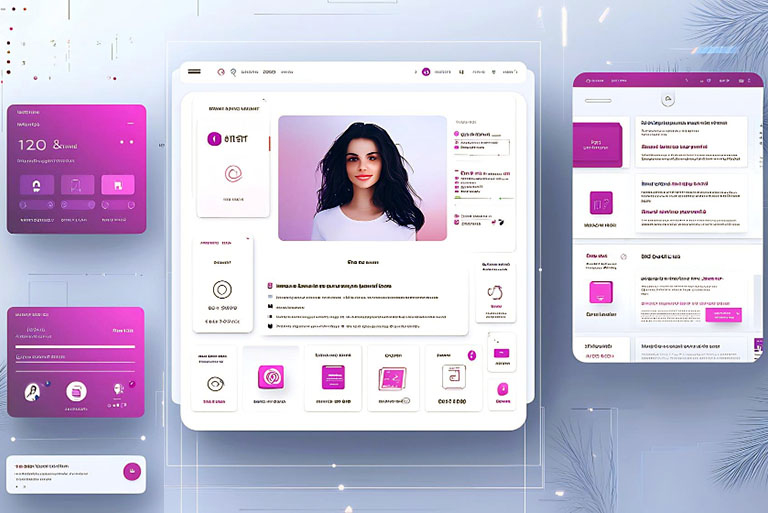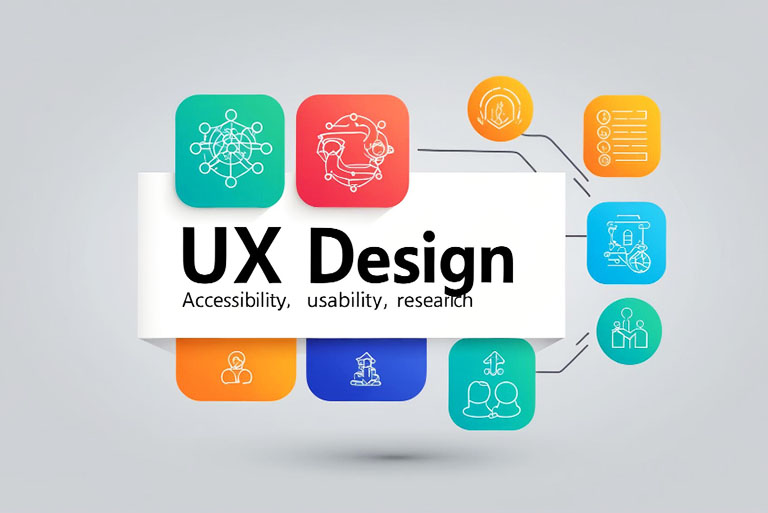Introduction
Did you know that 75% of UX designers believe AI will significantly change their job roles within the next five years? That’s right—artificial intelligence (AI) is no longer a distant future; it’s here, and it’s transforming the world of user experience (UX) design faster than ever. From automating repetitive tasks like wireframing to delivering hyper-personalized user interfaces, AI is reshaping how UX professionals work and how businesses deliver value to their customers.
But here’s the challenge: for UX designers, keeping up with AI-driven changes can feel overwhelming. Questions like, “Will AI replace my role?” or “What skills do I need to stay relevant?” are becoming more common. For businesses, the stakes are even higher—failing to adopt AI in UX design could mean losing out to competitors who are already leveraging these tools to create seamless, engaging user experiences.
That’s where UXGen Technologies steps in. With our expertise in AI-driven UX solutions, we’re here to help both UX professionals and businesses navigate this transformation. Whether you need an AI-powered UX audit, training to upskill your team, or tools to streamline your design process, we’ve got you covered. In this blog, you’ll discover how AI is impacting UX job roles, the skills you need to stay ahead, and how UXGen Technologies can guide you through this exciting yet challenging landscape.
Let UXGen Technologies help you integrate AI into your UX workflow for faster, smarter design cycles. Our AI-driven solutions streamline processes and boost efficiency.
Imagine a world where UX designers spend less time on tedious tasks like resizing images or creating wireframes and more time solving complex user problems. Or picture a scenario where AI predicts user behavior so accurately that businesses can deliver personalized experiences at scale, boosting engagement and satisfaction. This isn’t science fiction—it’s the future of UX design, powered by AI.
But with great opportunity comes great responsibility. For UX professionals, this means grappling with questions like: “How do I integrate AI into my workflow?” or “What new skills do I need to ensure AI enhances, rather than replaces, human creativity?” For businesses, the challenge is even bigger. Failing to adapt to AI-driven UX trends could mean falling behind competitors who are already leveraging these technologies to create superior user experiences.
In this blog, we’ll explore:
- The specific ways AI is transforming UX job roles.
- How UX professionals can adapt and thrive in this new era.
- Real-world examples of AI’s impact on UX design.
- Actionable steps to future-proof your UX career or business.
By the end, you’ll have a clear understanding of how to embrace AI in UX design—and how UXGen Technologies can help you do it. Let’s get started and unlock the potential of AI for your career or business.
Understanding the Problem
The AI Revolution in UX Design
Artificial intelligence is no longer just a buzzword—it’s a reality that’s reshaping industries, and UX design is at the forefront of this transformation. According to a 2023 Gartner report, 60% of UX teams are already using AI tools to enhance their design processes. But what does this mean for UX professionals and businesses?
At its core, AI is automating tasks that once required hours of manual effort. Here are a few examples:
- Automated wireframing: AI tools can generate wireframes based on user requirements, reducing the time spent on initial designs by up to 40%.
- User behavior prediction: AI analyzes vast amounts of data to predict how users will interact with a product, allowing designers to make data-driven decisions.
- Personalized experiences: AI enables dynamic interfaces that adapt to individual user preferences, increasing engagement and satisfaction by 20%, according to a 2024 Forrester study.
While these advancements are exciting, they also raise concerns. 45% of UX designers fear that AI could make their roles obsolete, according to a 2024 UX Industry Survey. Businesses, too, face the challenge of integrating AI into their design processes without disrupting workflows or alienating their teams.
The Real-World Impact on Businesses and UX Professionals
For UX professionals, the rise of AI means:
- Shifting responsibilities: Designers are moving from execution-focused roles to strategic, oversight positions where they guide AI tools and interpret data.
- Skill gaps: Many UX designers lack the technical skills needed to work with AI, creating a demand for upskilling.
- Ethical considerations: As AI takes on more decision-making, designers must ensure that algorithms are fair, transparent, and inclusive.
For businesses, the impact is equally profound:
- Faster design cycles: AI can reduce the time from concept to launch by 30%, according to McKinsey.
- Cost savings: Automating routine tasks can cut UX design costs by up to 25%.
- Improved user satisfaction: AI-driven personalization can boost user engagement by 20%, leading to higher conversion rates and revenue growth.
However, businesses must also navigate the complexities of implementing AI, from choosing the right tools to training their teams. Without the right support, these challenges can feel overwhelming.
Partner with UXGen Technologies to implement AI-driven design solutions that delight your users. Our tools and expertise ensure seamless, personalized experiences.
Solution & Insights
How UX Professionals Can Adapt to AI
The good news? AI isn’t here to replace UX designers—it’s here to augment their capabilities. But to thrive in this new landscape, UX professionals must embrace new skills and mindsets.
1. Learn AI Tools and Technologies
You don’t need to become an AI expert, but you should understand how to use AI-driven design tools. Platforms like Figma’s AI plugins or Adobe Sensei can automate tasks like image resizing, color palette generation, and even user testing.
Actionable Tip: Start by exploring free AI tools like ChatGPT for ideation or Midjourney for visual inspiration. These can help you integrate AI into your workflow without a steep learning curve.
Internal Link: Learn more about our AI-focused UX training programs at Uxgen Academy to get started.
2. Develop Data Literacy
AI thrives on data, and so should UX designers. Understanding how to interpret user data, A/B test results, and predictive analytics is crucial for making informed design decisions.
Actionable Tip: Take an online course on data analysis for UX designers. Platforms like Uxgen Academy offer specialized training to help you upskill quickly.
External Link: According to Google’s AI Ethics Guidelines, data transparency is key to building trust in AI systems.
3. Focus on Ethical Design
As AI becomes more integrated into UX, designers must ensure that algorithms are transparent and unbiased. This means advocating for ethical AI practices and designing with inclusivity in mind.
Trends and Best Practices for Businesses
For businesses, integrating AI into UX design requires a strategic approach. Here are some key trends and best practices:
1. AI-Driven UX Audits
Traditional UX audits can be time-consuming and subjective. AI-powered audits, however, can analyze user behavior at scale, identifying pain points and opportunities for improvement faster and more accurately.
Insight: At UXGen Technologies, our AI-driven UX audits have helped clients reduce bounce rates by 15% and increase conversion rates by 10%.
Internal Link: Explore our UX Audit services to see how we can help your business.
2. Hyper-Personalization
AI enables businesses to deliver tailored experiences based on user preferences, behavior, and context. This level of personalization can significantly boost user satisfaction and loyalty.
Insight: A 2024 Forrester study found that businesses using AI for personalization saw a 25% increase in customer retention.
3. Collaborative AI Workflows
AI can act as a collaborator, not just a tool. For example, AI can suggest design variations, generate content, or even predict user feedback before a product launches.
Insight: Teams that embrace collaborative AI workflows report 20% faster design iterations, according to UXGen Technologies’ internal research.
Supercharge your design process with AI tools and expertise from UXGen Technologies. Focus on innovation, not repetition.
Case Studies & Examples
Real-World Impact: How UXGen Technologies Helped Businesses Adapt
Let’s look at a hypothetical case study to illustrate how AI can transform UX design—and how UXGen Technologies can help.
Case Study: E-Commerce Platform Redesign
Client: A mid-sized e-commerce company struggling with high cart abandonment rates.
Challenge: The client’s UX team was overwhelmed with manual A/B testing and couldn’t keep up with user demands for personalized experiences.
Solution:
- AI-Powered UX Audit: UXGen Technologies conducted an AI-driven audit, identifying key friction points in the checkout process.
- Personalization Engine: We implemented an AI-based personalization engine that tailored product recommendations and interface elements based on user behavior.
- Automated Wireframing: Our team used AI tools to generate and test multiple wireframe variations in half the time.
Results:
- Cart abandonment decreased by 30%.
- User satisfaction scores increased by 25%.
- Design cycle time reduced by 40%.
This case study demonstrates how AI can solve real business problems when applied strategically.
Internal Link: Learn more about our AI-driven personalization services to improve your conversion rates.
Before and After: The UX Designer’s Role
Before AI:
- UX designers spent hours on repetitive tasks like creating wireframes, resizing images, and conducting user tests.
- Decision-making was often based on intuition rather than data.
After AI:
- AI handles routine tasks, freeing designers to focus on strategy and creativity.
- Designers use data-driven insights to make informed decisions, leading to better outcomes.
Master AI-driven design and stand out. UXGen Academy offers training and insights to elevate your expertise.
Actionable Takeaways
Key Lessons for UX Professionals and Businesses
Here are the key takeaways from this blog:
- Embrace AI as a collaborator, not a threat. Use it to enhance your creativity and efficiency.
- Upskill in AI tools and data analysis to stay competitive in the job market.
- Prioritize ethical design to ensure AI-driven experiences are fair and inclusive.
- Leverage AI for personalization to improve user satisfaction and business outcomes.
Step-by-Step Solutions
For UX Professionals:
- Start small: Experiment with AI tools like ChatGPT for brainstorming or Figma’s AI plugins for design automation.
- Take a course: Enroll in a UX-focused AI course through Uxgen Academy to build your skills.
- Network with peers: Join online communities like UXGen’s LinkedIn Group to share insights and learn from others.
For Businesses:
- Conduct an AI-powered UX audit: Identify areas where AI can improve your design process.
- Implement personalization: Use AI to deliver tailored experiences that boost engagement.
- Train your team: Partner with Uxgen Academy to upskill your UX team in AI-driven design.
Conclusion & CTA
AI is no longer a distant future – it’s here, and it’s transforming UX design in profound ways. For UX professionals, this means embracing new tools, skills, and mindsets. For businesses, it means leveraging AI to create better user experiences, faster and more efficiently.
At UXGen Technologies, we’re at the forefront of this transformation. Whether you need an AI-driven UX audit, training for your team, or help implementing AI-powered personalization, we’re here to guide you every step of the way.
Ready to future-proof your UX career or business? Contact us today to learn how we can help you thrive in the age of AI. Don’t forget to share your thoughts in the comments or reach out for personalized guidance!
Internal Link: Explore our UX training programs to upskill your team today.
FAQ Section
Q: Will AI replace UX designers?
A: No, AI is a tool that enhances UX designers’ capabilities. It automates routine tasks, allowing designers to focus on strategy and creativity.
Q: What skills do UX designers need to work with AI?
A: UX designers should learn basic AI tools, data analysis, and ethical design principles to stay competitive.
Q: How can businesses benefit from AI in UX design?
A: AI can reduce design costs, speed up processes, and improve user satisfaction through personalization, leading to higher conversion rates.
How UXGen Technologies Can Help
At UXGen Technologies, we understand the challenges and opportunities that AI brings to UX design. Our suite of services is designed to help both UX professionals and businesses adapt and thrive:
- Uxgen Design Studio: Get expert guidance on integrating AI into your design process, from UX research to UI design.
- Uxgen Academy: Upskill your team with our AI-focused UX training programs, tailored to your needs.
- Uxgen Marketing: Leverage AI-driven digital marketing strategies to boost your online presence and drive revenue growth.
Whether you’re looking to optimize your UX workflow, train your team, or implement AI-powered solutions, we’re here to help. Contact us today to start your journey toward a smarter, more efficient UX design process.
Trending Hashtags
#UXDesign #AIinUX #FutureOfDesign #UXTrends2025 #UXGenTechnologies








